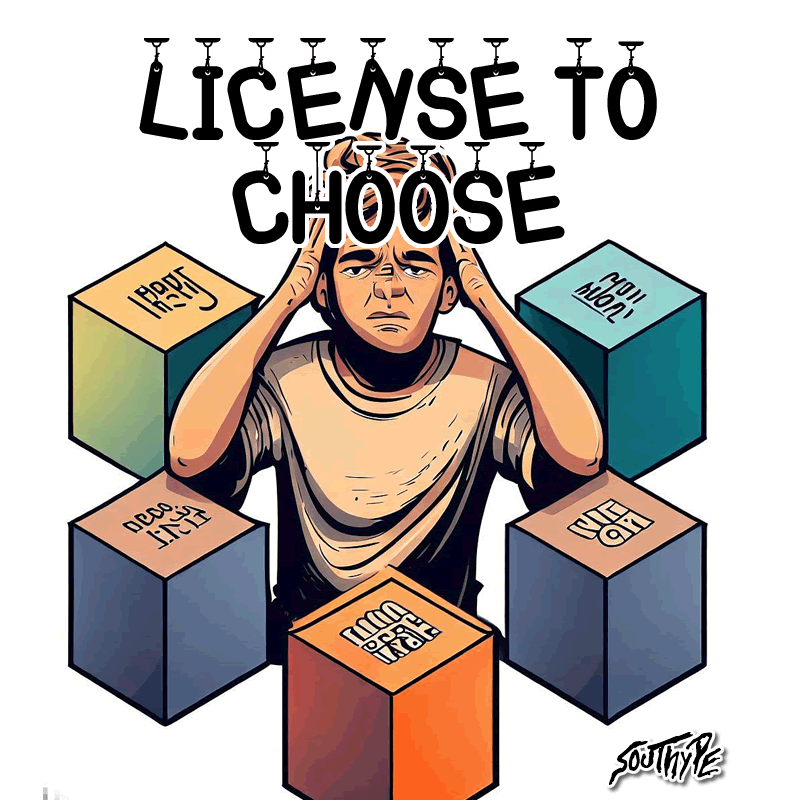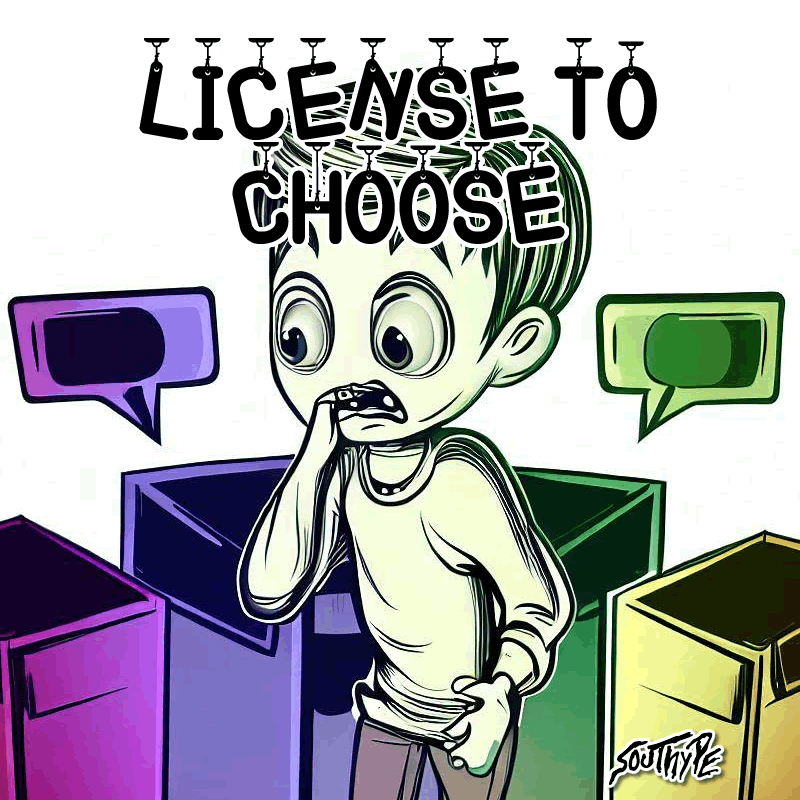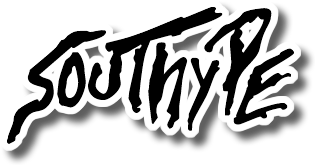
When it comes to using typography fonts in creative projects, it’s important to understand the different licenses that font creators may offer. Here are some common types of licenses you may come across when acquiring fonts:
- Personal Use License
- Commercial Use License
- Desktop License
- Webfont License
- App License
- eBook License
- Broadcasting License
- Server License

- A Personal Use License is a type of font license that grants individuals the right to use a font for personal projects and non-commercial purposes. This license allows individuals to incorporate fonts into their personal artwork, crafts, personal websites, invitations, and other personal projects without the need for additional permissions or licensing.
When obtaining a font with a Personal Use License, it is important to understand and abide by the terms and restrictions associated with the license. Typically, these licenses specify that the font should not be used for any commercial activities or for generating revenue. This means that you cannot use the font in designs or products that will be sold, advertised, or used for promotional purposes.
The Personal Use License also often prohibits the sharing, distribution, or modification of the font files. This ensures that the font remains within the confines of personal use and does not become widely accessible without proper licensing or permission from the font creator.
It’s important to note that even though Personal Use Licenses are generally free, they still carry legal weight. Violating the terms of the license can infringe upon the rights of font creators and potentially lead to legal consequences.
To respect the font creator’s rights and adhere to the Personal Use License, it is crucial to use the font solely for personal and non-commercial projects. If you have a need to use the font in a commercial context or generate revenue from your project, it is necessary to obtain a separate commercial license or seek permission from the font creator or foundry.
By understanding and respecting the limitations of the Personal Use License, individuals can enjoy the creative freedom and flexibility of using fonts in their personal projects while honoring the rights and intentions of font creators. Remember, font licensing is a way to support the ongoing creativity and innovation of font designers and maintain a fair and sustainable creative community.
- Commercial Use License: A commercial use license grants permission to use the font in projects that generate revenue or involve business activities. This includes designs for logos, advertisements, packaging, websites, and other commercial ventures.A Commercial Use License is a type of font license that grants individuals or businesses the legal right to use a font for commercial purposes. It allows the font to be incorporated into projects that are intended for business activities or generate revenue. This includes using the font in designs for logos, advertisements, packaging, websites, products for sale, and other commercial ventures.When acquiring a font with a Commercial Use License, it is important to carefully review and adhere to the licensing terms and conditions set by the font creator or foundry. These terms may vary depending on factors such as the scope of the project, the number of users, and the intended usage.Commercial Use Licenses typically require the purchase of a license or obtaining permission from the font creator or foundry. This ensures that font creators are compensated for their work and grants the licensee the necessary rights to utilize the font in their commercial projects.
It is crucial to understand the specific provisions of the Commercial Use License, including any limitations or restrictions on usage, embedding, distribution, or modification of the font files. Some licenses may have restrictions on the number of users or the specific formats in which the font can be used (e.g., web fonts, desktop fonts).
By obtaining a Commercial Use License, individuals or businesses can legally and ethically incorporate fonts into their commercial projects. This not only ensures compliance with copyright laws but also supports the creative efforts of font creators and contributes to the sustainability of the design community.
Remember, using fonts without a proper Commercial Use License for commercial purposes is a violation of copyright laws and can result in legal consequences. It is always best to obtain the appropriate licensing or permission from font creators or authorized distributors to ensure the proper and legal use of fonts in commercial projects.
By respecting Commercial Use Licenses and supporting font creators, individuals and businesses can leverage fonts effectively to enhance their branding, marketing, and design efforts while honoring the rights of font creators and contributing to a fair and thriving creative ecosystem.

- Desktop License: A Desktop License is a type of font license that allows individuals or businesses to install and use a font on a specified number of computers or devices for personal or commercial purposes. This license is specifically tailored for fonts used in desktop applications, such as graphic design software, word processors, or any other software installed locally on a computer.When acquiring a font with a Desktop License, it is important to understand the terms and restrictions associated with the license. These terms may vary depending on the font creator or foundry, so it is crucial to review the license agreement provided with the font.A Desktop License typically specifies the number of computers or devices on which the font can be installed and used. For example, a license may allow installation on one computer, five computers, or even an unlimited number of computers within a single organization. It is important to abide by the terms and not exceed the allowed number of installations to ensure compliance with the license.Additionally, the Desktop License may outline the usage rights and restrictions. This may include limitations on using the font for personal or commercial projects, embedding the font in documents or PDFs, or using it in specific formats such as print or digital media.
It is important to respect the Desktop License and use the font within the designated scope outlined in the license agreement. Violating the terms of the license can infringe upon the rights of the font creator and may result in legal consequences.
By obtaining a Desktop License, individuals or businesses can legally and securely use fonts in their desktop applications, ensuring the quality and consistency of their designs and communications. It provides the necessary permissions to install and utilize the font in a local computing environment.
Remember, font licensing terms may vary, so it is essential to carefully read and understand the license agreement associated with the font you acquire. If you have any questions or uncertainties about the license terms, it is best to contact the font creator or foundry for clarification.
By respecting the Desktop License, you can harness the power of fonts to enhance your desktop-based projects while honoring the rights of font creators and contributing to a fair and sustainable creative community.
- Webfont License: A Webfont License is a type of font license that grants individuals or businesses the right to use a font on websites or web-based applications. It allows the font to be embedded into webpages using @font-face or other webfont technologies, ensuring that the font is displayed consistently across different web browsers and devices.When acquiring a font with a Webfont License, it is crucial to carefully review and comply with the licensing terms and conditions specified by the font creator or foundry. These terms may vary depending on factors such as the number of page views, the number of domains, or the duration of the license.A Webfont License typically outlines the permitted usage rights and restrictions. It may specify the maximum number of page views allowed per month or set a limit on the number of domains where the font can be used. Some licenses may also restrict the font’s usage to specific web formats or technologies.It is important to respect the terms of the Webfont License and use the font strictly within the designated scope outlined in the license agreement. Violating the license terms can infringe upon the rights of the font creator and may have legal consequences.
By obtaining a Webfont License, individuals or businesses can legally and confidently use fonts in their web-based projects, ensuring a consistent and visually appealing typographic experience for website visitors. The license grants the necessary permissions to embed the font in webpages and ensures that the font can be accessed and displayed correctly by users.
Remember, each font’s Webfont License may have specific provisions, so it is essential to carefully read and understand the license agreement associated with the font you acquire. If you have any questions or uncertainties about the license terms, it is best to contact the font creator or foundry for clarification.
By respecting the Webfont License, you can leverage the power of fonts to enhance the typography and design of your web projects while respecting the rights of font creators and contributing to a fair and thriving creative ecosystem.
- App License: An App License is a type of font license that grants individuals or businesses the right to use a font within a mobile or desktop application. This license allows the font to be embedded and distributed as part of the application, ensuring consistent and visually appealing typography for users.When acquiring a font with an App License, it is important to carefully review and adhere to the licensing terms and conditions provided by the font creator or foundry. These terms may vary depending on factors such as the platform (iOS, Android, Windows, etc.) and the number of installations or downloads.An App License typically outlines the permitted usage rights and restrictions for the font within the application. It may specify whether the font can be embedded as part of the app or if it requires separate licensing or permissions. Additionally, the license may outline limitations on the number of installations or downloads allowed.It is crucial to respect the terms of the App License and use the font strictly within the designated scope outlined in the license agreement. Violating the license terms can infringe upon the rights of the font creator and may have legal consequences.
By obtaining an App License, individuals or businesses can legally and confidently incorporate fonts into their mobile or desktop applications, ensuring a consistent and visually appealing user experience. The license grants the necessary permissions to embed and distribute the font as part of the application, enhancing the overall design and branding.
Remember, each font’s App License may have specific provisions, so it is essential to carefully read and understand the license agreement associated with the font you acquire. If you have any questions or uncertainties about the license terms, it is best to contact the font creator or foundry for clarification.
By respecting the App License, you can leverage the power of fonts to enhance the typography and design of your applications while respecting the rights of font creators and contributing to a fair and thriving creative ecosystem.
- eBook License: An eBook License is a type of font license that grants individuals or publishers the right to use a font within an electronic book or digital publication. This license allows the font to be embedded and distributed as part of the eBook, ensuring consistent and visually appealing typography for readers.When acquiring a font with an eBook License, it is important to carefully review and comply with the licensing terms and conditions provided by the font creator or foundry. These terms may vary depending on factors such as the number of eBooks to be distributed, the platforms or file formats used, and the intended readership.An eBook License typically outlines the permitted usage rights and restrictions for the font within the electronic book. It may specify whether the font can be embedded as part of the eBook or if it requires separate licensing or permissions. Additionally, the license may provide guidelines on the number of eBook copies allowed to be distributed or limitations on the file formats supported.It is crucial to respect the terms of the eBook License and use the font strictly within the designated scope outlined in the license agreement. Violating the license terms can infringe upon the rights of the font creator and may have legal consequences.
By obtaining an eBook License, individuals or publishers can legally and confidently incorporate fonts into their eBooks, enhancing the overall reading experience and visual presentation. The license grants the necessary permissions to embed and distribute the font as part of the eBook, ensuring consistency in typography and design.
Remember, each font’s eBook License may have specific provisions, so it is essential to carefully read and understand the license agreement associated with the font you acquire. If you have any questions or uncertainties about the license terms, it is best to contact the font creator or foundry for clarification.
By respecting the eBook License, you can leverage the power of fonts to enhance the typography and design of your electronic books while respecting the rights of font creators and contributing to a fair and thriving creative ecosystem.
- Broadcasting License: A Broadcasting License is a type of font license that grants individuals or organizations the right to use a font in broadcast media, such as television, radio, or streaming platforms. This license allows the font to be used in on-air graphics, titles, captions, subtitles, and other visual elements associated with broadcasting.When obtaining a font with a Broadcasting License, it is important to carefully review and adhere to the licensing terms and conditions specified by the font creator or foundry. These terms may vary depending on factors such as the scope of the broadcast, the number of channels or programs, and the duration of the license.A Broadcasting License typically outlines the permitted usage rights and restrictions for the font within broadcast media. It may specify whether the font can be embedded in graphics software or used directly in broadcast systems. Additionally, the license may have limitations on the number of channels or programs where the font can be used or restrictions on its usage in specific formats or contexts.It is crucial to respect the terms of the Broadcasting License and use the font strictly within the designated scope outlined in the license agreement. Violating the license terms can infringe upon the rights of the font creator and may have legal consequences.
By obtaining a Broadcasting License, individuals or organizations can legally and confidently incorporate fonts into their broadcast media, ensuring a consistent and visually appealing typographic presentation. The license grants the necessary permissions to use the font in on-air graphics and other visual elements, contributing to the overall branding and visual identity of the broadcast.
Remember, each font’s Broadcasting License may have specific provisions, so it is essential to carefully read and understand the license agreement associated with the font you acquire. If you have any questions or uncertainties about the license terms, it is best to contact the font creator or foundry for clarification.
By respecting the Broadcasting License, you can leverage the power of fonts to enhance the typography and design of your broadcast media while respecting the rights of font creators and contributing to a fair and thriving creative ecosystem.
- Server License: Server License is a type of font license that grants individuals or organizations the right to install and use a font on a server or network infrastructure. This license allows the font to be accessed and utilized by multiple users or devices connected to the server or network. When acquiring a font with a Server License, it is important to carefully review and comply with the licensing terms and conditions provided by the font creator or foundry. These terms may vary depending on factors such as the number of server installations, the number of users accessing the font, and the intended usage.It is crucial to respect the terms of the Server License and use the font strictly within the designated scope outlined in the license agreement. Violating the license terms can infringe upon the rights of the font creator and may have legal consequences.By obtaining a Server License, individuals or organizations can legally and securely install and utilize fonts within their server environments, ensuring consistent typography across multiple users and devices. The license grants the necessary permissions to deploy the font on the server and allows authorized users to access and use the font as needed.
Remember, each font’s Server License may have specific provisions, so it is essential to carefully read and understand the license agreement associated with the font you acquire. If you have any questions or uncertainties about the license terms, it is best to contact the font creator or foundry for clarification.
By respecting the Server License, you can leverage the power of fonts to enhance the typography and design of your server-based applications or networked environments while respecting the rights of font creators and contributing to a fair and thriving creative ecosystem.
It’s important to carefully review the specific terms and conditions of each license before using a font in your project. Some licenses may have additional restrictions or requirements, such as limitations on the number of users, geographical distribution, or modifications to the font.
Remember, licensing terms and availability may vary depending on the font creator or foundry. Always consult the license agreement provided with the font or contact the font creator directly for any clarifications or special permissions required for your specific use case.

